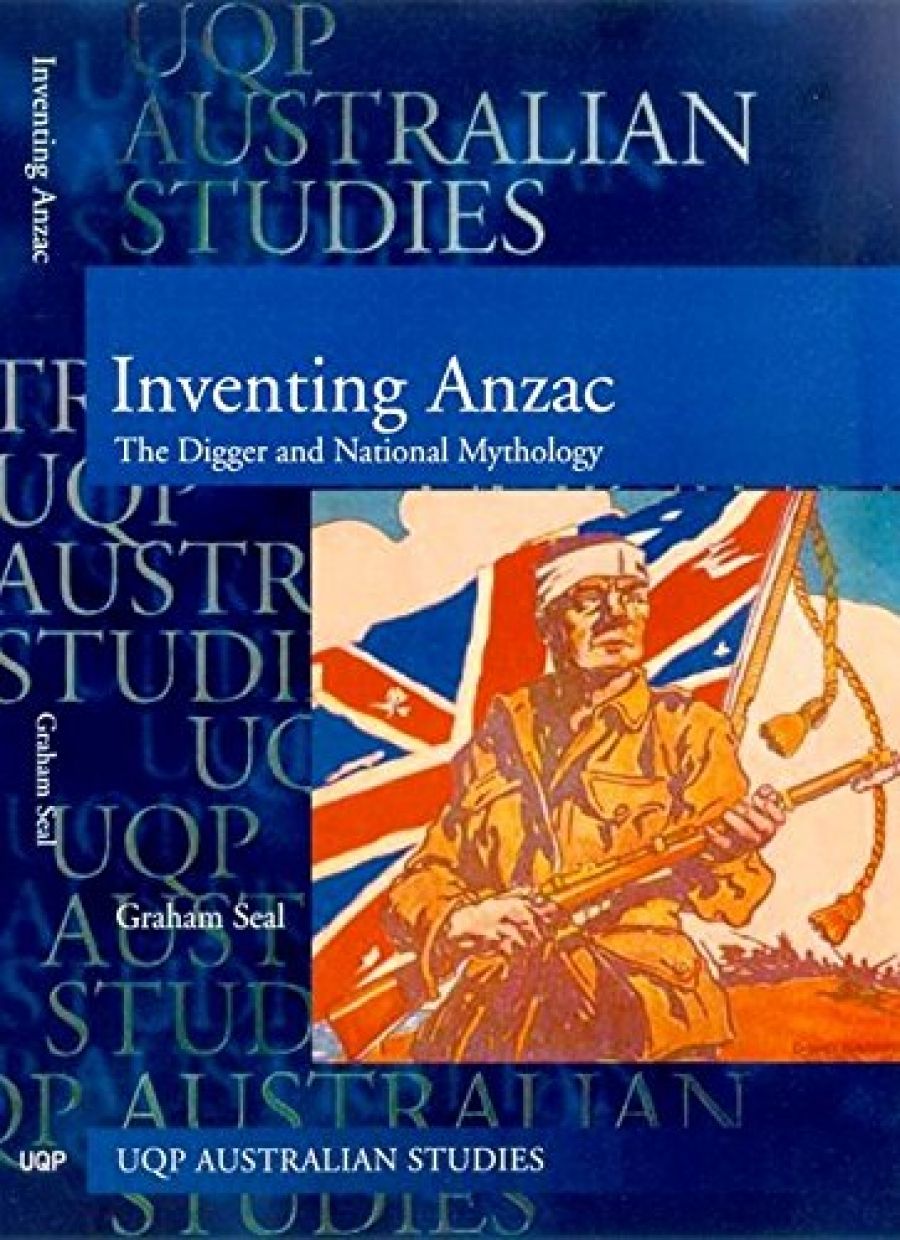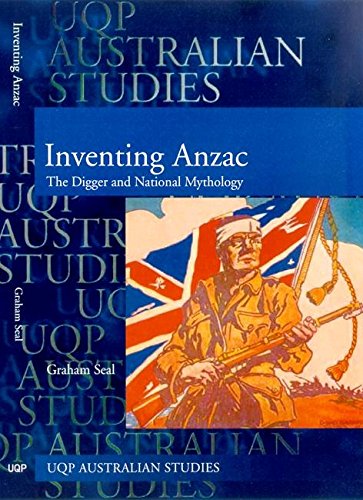
- Free Article: No
- Contents Category: Australian History
- Review Article: Yes
- Article Title: It's Worse Further Up
- Online Only: No
- Custom Highlight Text:
‘Select arresting quotes. Let your characters speak if the evidence is there,’ A.J.P. Taylor told his Oxford history students. In his own best-selling The First World War: An Illustrated History, struggling to convey something of the enormity of the disaster of the third battle of Ypres, Taylor wrote: ‘On 8 November Haig’s Chief-of-Staff visited the fighting zone for the first time. As his car struggled through the mud, he burst into tears and cried: “Good God, did we really send men to fight in that?” His companion replied: “It’s worse further up.”’
- Book 1 Title: Inventing ANZAC
- Book 1 Subtitle: The digger and national mythology
- Book 1 Biblio: UQP, $32.95 pb, 232 pp
- Book 1 Cover Small (400 x 600):

- Book 1 Cover (800 x 1200):

Graham Seal’s Inventing Anzac is not directly about that war, but about its folk legend and nation-building consequences in Australia. In one chapter, ‘The Anecdotal Republic’, Seal begins ‘unravelling the yarns’ told by the soldiers and passed down the generations: ‘[One yarn] is well known to military historians ... on being shown the Ypres (or other) battlefield, a high-ranking, usually British, officer, says: “My God, did we really send men to fight in that?”, or similar.’
These different takes on the same ‘evidence’ suggest something of the shift in the writing of history over the last forty years. They also point to one of my few quibbles with Seal’s study, though, apart from occasional awkward forays into ‘theory’. Taylor would have approved of its readable style. Somehow, in Seal’s focus on language, ritual, the festive and social control, we occasionally forget that the stories, songs. ceremonies and memorials began in unimaginable slaughter. It may not have happened as the legend has it – eyewitnesses may have reconstructed their memories within known genres – but something otherwise unrepresentable happened, the trauma of which has not yet been laid to rest. The massive statue of Earl Haig still stands in Whitehall, though since 1998 there have been repeated calls for it to be melted down.
Seal’s starting point is that while Australia shared the horrors of Gallipoli and of the Western Front and their consequences for Western society in general, what happened here afterwards was important in other ways as well. A nation was declared born, and defined according to a narrow range of human traits selected from those of some of its· male participants. Inventing Anzac offers as its central thesis the idea that this was produced by two contradictory traditions, which, for clarity, Seal defines as the digger and the Anzac. One was a larrikin, anti-establishment folk legend sustained by all the channels of oral culture – jokes, songs, cartoons, tall stories – but which slowly dissolved into sad, sentimental piss-ups (think of Alan Seymour’s play The One Day of the Year), to be replaced by an officially endorsed, increasingly conservative tradition: Anzac Day, the RSSILA/RSL, the Australian War Memorial, dinners, speeches and children saluting the flag. Both traditions could be xenophobic and reactionary-nationalist, but Seal shows how they intersected and conflicted. For example, in the debates over whether sport should be allowed on Anzac Day, and how the dawn service was introduced in the late 1920s as:
an element of Anzac Day that avoided the formalities, the imperial and religious rhetoric, the pomp and ceremony; an element that, in no matter how small a way, allowed Australians to stake a claim to their national war heroes in a manner that would affirm the simple but powerful communities of the dead and the living, the community of the nation rather than the pomp of official nationalism.
My own father never wore his medals or marched on Anzac Day, but he always went to the dawn service.
Seal’s evidence ranges from ‘Who called the cook a bastard?’/ ‘Who called the bastard a cook?’ jokes to C.E.W. Bean’s writings and inventions; from trench newspapers, through C.J. Dennis’s The Moods of Ginger Mick (1916), to Smith’s Weekly. He shows how Anzac Day ceremonies varied in different states, with much of the impetus coming from Western Australia, where it became a public holiday in 1919; and, drawing on earlier studies of Toowoomba and Gutha, how bush communities differed in their emphases on sadness and celebration. He adds to the increasing body of evidence that ‘mateship’ (as distinct from the universal comradeship of war) was a later invention, and rolls subsequent contributions from World War II and Vietnam into the legend.
Inventing Anzac alternates between being a set of very specific case studies and a larger theorised picture of the war’s impact on Australian society. The case studies don’t always work on both levels: nearly all the lyrics analysed in the ‘Singing Soldiers’ chapter are British songs, at best minimally rewritten. Nevertheless, while doubtless in wider parlance ‘digger’ and ‘Anzac’ will continue to be used interchangeably, it is hard to imagine any future serious historical analysis failing to acknowledge Seal’s useful distinction.


Comments powered by CComment